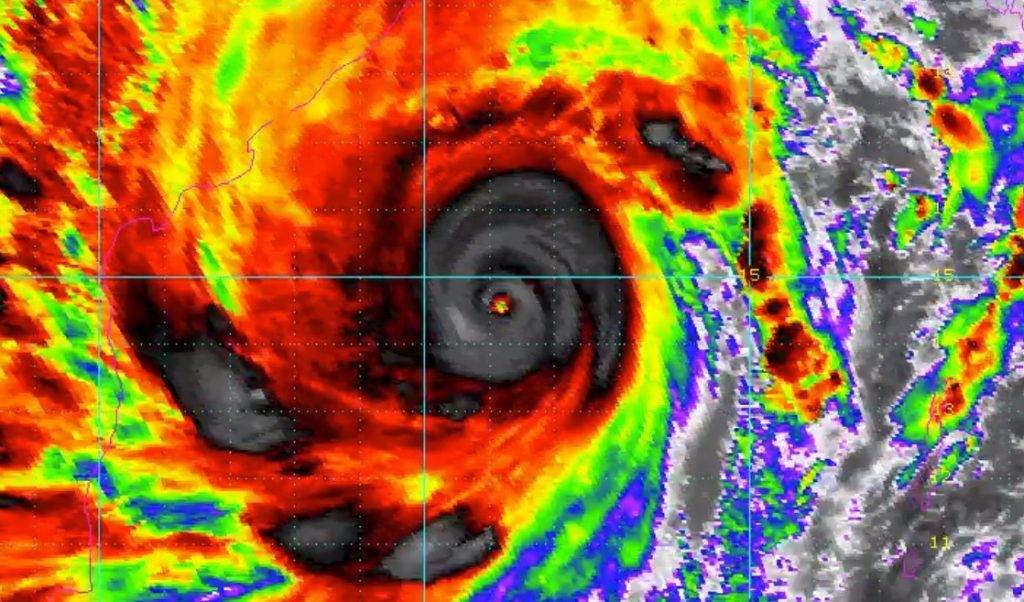Cyclone Amphan left a trail of destruction across coastal India and Bangladesh.
Dozens of people were killed, homes were flattened and millions left without power.

Powerful cyclone Amphan killed more than 85 people in India and Bangladesh, flattening tens of thousands of homes and battering the metropolis of Kolkata after it roared ashore on Wednesday.
“It feels like a dystopian Jurassic Park of sorts,” Shuli Ghosh, who runs a cafe in Kolkata, told The Associated Press. “The roofs of many homes have flown away and the streets are waterlogged.”
The storm began over the Bay of Bengal as one of the strongest tropical cyclones ever recorded in the northern Indian Ocean.
Just in: The JTWC has upgraded Super Cyclone #Amphan to 145kt (270kph).
— Eric Holthaus (@EricHolthaus) May 18, 2020
Amphan is now the strongest cyclone ever recorded in the Bay of Bengal, passing the 1999 Odisha cyclone (260kph).
Amphan is a potential catastrophic disaster for West Bengal, Bangladesh, and Burma. pic.twitter.com/teLYuC1FyA
Although Amphan weakened as it approached land, it brought powerful winds, driving rain and a huge tidal surge.
Super Cyclone at West Bengal #Amphan #AmphanSuperCyclone pic.twitter.com/OQUNy2KXaL
— INTELLECTUAL INDIA (@Intellect4India) May 21, 2020
Trail of devastation in India
The Indian state of West Bengal bore the brunt of the storm’s fury.
Two low-lying districts in the state suffered widespread destruction of homes, crops and infrastructure, while its capital, Kolkata, witnessed torrential rains and winds of up to 100 miles an hour.
Cyclone Amphan left an “unprecedented trail of devastation,” said Mamata Banerjee, the chief minister of West Bengal.
Cyclone #Amphan has left a trail of devastation beyond our thoughts. While the material damage is substantial, Bengal stands united in this time of crisis. Together we will overcome this because nothing can dampen the spirit and strength of the people of Bengal.
— Mamata Banerjee (@MamataOfficial) May 21, 2020
জয় বাংলা।
A metropolis of 15 million people known for its crumbling charm, Kolkata awoke Thursday to waterlogged streets filled with debris, power outages and the sight of huge trees toppled over onto cars and buses, crumpling them like tin cans.
“The mud houses have been flattened, there are cable wires and fallen trees everywhere. It is a devastating sight.”
This is from my terrace this morning. Trees on both sides of the road all over. People now taking photos in horror. We haven’t ever seen things like this before in Kolkata. #CycloneAmphan pic.twitter.com/IcYReBounw
— Boria Majumdar (@BoriaMajumdar) May 21, 2020
At least 72 people died in West Bengal, 15 of them in Kolkata. Many were crushed by falling trees or electrocuted by downed power lines.
Additionally, two people were killed in Odisha state, India and more than 13 in Bangladesh.
The full scope of the damage still hasn’t been assessed because roads and bridges are washed out, preventing crews from reaching some areas. Communications are also down.
About 3 million people were evacuated from their homes in India ahead of the storm’s arrival.
Officials struggled to find enough shelters for evacuees. In the state of West Bengal, cyclone shelters can usually house 500,000 people, but because of social distancing rules, that number has been slashed to 200,000.
Some evacuees feared they might contract the virus during hours stuck inside emergency shelters.
Death and damage in Bangladesh
In Bangladesh, at least 16 people were killed and more than 55,000 homes collapsed, authorities said.
The storm’s path did not bring it directly over one of the world’s most vulnerable refugee populations.
Instead, it passed northwest of Cox’s Bazar, which meant that about a million Rohingya living in crowded camps were spared its worst effects.
On Thursday, Amphan had dissipated as it moved north but was still unloading torrential rainfall that could exceed a foot in some areas.
Flash flooding and mudslides are expected to threaten parts of northeast India, northern Bangladesh, Bhutan, and northern Myanmar into the weekend.
The loss of dwellings and crops, coming after two months of a nationwide lockdown that has left millions of Indians and Bangladeshis without an income, risks pushing those impacted by the storm into destitution. More Amphan news on Strange Sounds and Steve Quayle. [BBC, weather, WP]












[…] Weather officials told local media that part of the reason for the heatwave was the powerful storm – Cyclone Amphan – that struck parts of eastern India and Bangladesh last week. […]
We are going to be surrounded by cyclone F6 in Bangladesh which is very dearest for me. I love people of Bangladesh and are one of freedom ones you can drink beer in restaurants with out killing you. Hotel intercontinental is one of best 5 stars 40 dollars plus nights and secure all Americans are there with rest of world.Third shaking of planet is in motions indeed until we do not change our behavior then more quakes floods in Detroit MI , more quakes , fires and more Covid 20 deaths by summer 3000 a day globally. Think locally but act globally? No one can make vaccine of this one?